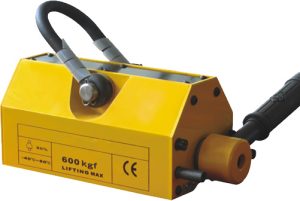
If you regularly lift and move heavy objects at work, you may want to invest in a lifting magnet. These rare-earth magnets are designed specifically for lifting. They typically have a neodymium base — neodymium is the strongest type of magnet — which they use to attract ferromagnetic materials.
While they are all strong, however, some lifting magnets are stronger than others. You can refer to the pull-off force to determine the strength of a lifting magnet. Here’s everything you need to know about pull-off force.
Pull-Off Force Explained
Pull-off force is the force required to break a magnet free from a steel plate. Also known as max pull-off, it’s typically measured in pounds. The higher a magnet’s pull-off force, the harder it will be to separate from a steel plate.
Pull-off force can vary. Some lifting magnets have a pull-off force of 770 pounds, whereas others have a pull-off force of over 46,000 pounds. A lifting magnet with a pull-off force of 46,000 pounds means you’ll have to apply 46,000 pounds of force to separate it from a steel plate.
Why Pull-Off Force Is Important
You should consider the pull-off force when shopping for a lifting magnet. It will allow you to gauge the strength of a lifting magnet.
Lifting magnets are undoubtedly strong. Thanks to their neodymium base, they are able to lift and hold heavy loads. But some lifting magnets are still stronger than others. The pull-off force will reveal the strength of a lifting magnet. A lifting magnet with a high pull-off force will have a stronger magnetic field than a lifting magnet with a low pull-off force.
Rated Lifting Weight vs Pull-Off Force
Lifting magnets have both a rated lifting weight and a pull-off force, the latter of which will always be higher than the former. Pull-off force provides insight into the strength of a lifting magnet, but you shouldn’t overlook the magnet’s rated lifting weight.
Rated lifting weight is exactly what it sounds like: the maximum weight for which a magnet has been rated to lift. As long as you stay within this limit, the magnet should lift the object. If the object is heavier than the magnet’s rated lifting weight, conversely, the magnet may struggle to lift and hold it.
In Conclusion
Manufacturers of lifting magnets often include pull-off force as a specification for their magnets’ strength. It represents the force, as expressed in pounds, needed to separate a magnet from a steel plate.
